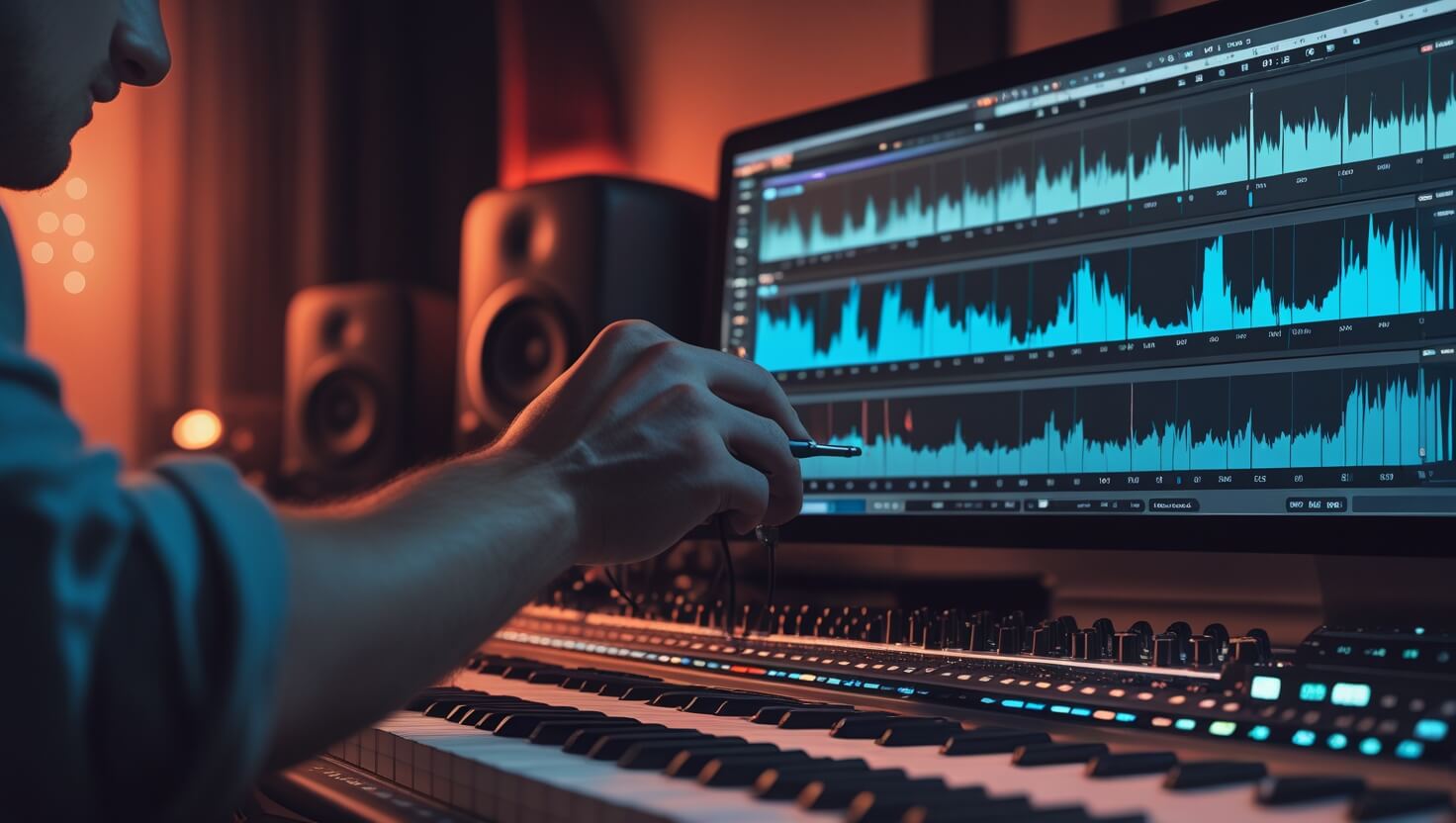Reverb and Delay: Adding Depth to Your Mixes

Professional tracks often feel immersive and spacious—not just because of performance or arrangement, but because of space manipulation. Reverb and delay are powerful effects that give your mix richness, depth, and move your listener emotionally. When used thoughtfully, they can lift your music from flat to full-bodied. Here’s how.
What Is Reverb?
Reverb simulates how sound reflects in a real environment—be it a small room or a grand cathedral. These reflections create a sense of space, adding atmosphere and realism:
- Short, tight room reverb (e.g., ~0.5 seconds) gives a subtle presence without clutter.
- Long, lush hall reverb (2–4+ seconds) creates dreamy ambiances, perfect for vocal depth or cinematic textures.
For practical setup, place reverb on a separate send/return track—this gives you control to:
What Is Delay?
Delay is an echo effect—it repeats sound at fixed intervals, adding rhythmic movement or atmosphere:
- Slapback delay (~50–150 ms) adds a vintage, doubling effect ideal for vocals.
- Ping-pong delay bounces echoes between stereo channels for width and depth.
- Tape-style or multi-tap delays create textured, spaced-out echoes ideal for ambient or experimental sounds.
For clarity:
- Set delay length to slightly later than your track’s tempo (e.g., 1/4 note delay at 120 BPM ≈ 500 ms) (greatentertainment.net)
- Keep feedback low for tight repeats—higher for dreamier vicinities
When to Use Reverb vs Delay
Think reverb = space, delay = time:
- Reverb creates natural atmosphere—room size, reflections, decay.
- Delay controls rhythmic echoes—echoes timed to tempo or musical phrases.
Use reverb when you want ambience and smooth spatial textures.
Use delay to create rhythmic emphasis, tonal width, or a sense of movement.
Imagine your vocal dry and close—delay gives it bounce; reverb wraps it in atmosphere. Often they work best together.
Pro Tips for Beginners
1. Use Pre-Delay on Reverb
- Pre-delay sets the gap between the dry sound and its reverb tail:
- Typically 20–40 ms on vocals maintains clarity (mysticalankar.com, reddit.com, greatentertainment.net)
- For drums, keep it shorter (≈10 ms) to retain punch (slatedigital.com)
- Tempo-syncing (e.g., 1/16th note delay) helps the reverb groove—63 ms at 120 BPM is popular
- “Pre-delay makes the source sound closer… more pre-delay means the singer would be closer” (reddit.com)
2. Decay Time Decisions
- Fast tracks: short decay (0.5–1 s) avoids clutter
- Slow/ambient tracks: longer decay (2–4 s+), but cut treble (5 kHz) to prevent sibilance (solarheavystudios.com)
3. Keep Effects Separate
- Use send/return busses for both reverb and delay (reddit.com)
- EQ your reverb—remove sub-200 Hz rumble to keep mix clean (greatentertainment.net)
- Blend parallel delay with dry vocals to avoid smearing lyrics
4. Learn to Listen Carefully
- Trust your ears: adjust settings until the vocal feels “heard, not soaked”
- Avoid extremes—too much effect can bury clarity (reddit.com)
Real-World Settings to Try
1. Vocal Space Reverb Preset
2. Hand Clap/Drums Reverb
3. Ping-Pong Delay on Guitars/Synths
Further Reading & Examples
- Wikipedia entry on reverb outlines real and synthetic methods (echo chambers, plates, springs, convolution) (en.wikipedia.org)
- Delay history covers tape-echo like Roland RE-201, and digital loopers used since the ’40s (en.wikipedia.org)
- Reddit thread: “Reverb and delay are, in essence, the same effect…” discusses their creative uses (reddit.com)
Final Thoughts
Reverb and delay are more than effects—they’re emotional tools. Whether you want a vocal to feel intimate and forward, or drugs to bounce and swell in wide space, control is key.
- Understand pre-delay to separate sound from space
- Use decay time for atmosphere versus clarity
- Combine reverb and delay to shape both time and space dynamically
Start with subtlety. Listen how each tweak changes your mix. Once you master these, your tracks will feel bigger, more emotional, and deeply immersive.
